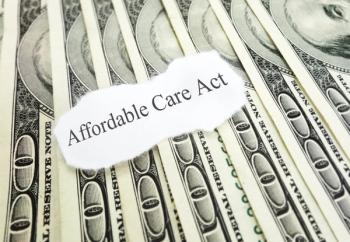
A smoking cessation strategy many health plans overlook
Even though e-cigarette smoking is on the rise, wellness programs are not giving smoking cessation nearly enough attention or resources, according to a new HealthMine survey.
Wellness programs are not giving smoking cessation nearly enough attention, even though e-cigarette smoking is on the rise, according to the results of a recent survey.
Wellness incentives that are personalized and tailored to individual member needs can help combat the hazards of cigarette smoking, according to a recent
Williams“E-cigarette smoking is on the rise, and 18% of adult Americans are smokers,” according to Bryce Williams, president and CEO of HealthMine.“As health plan sponsors help their members take greater control of their own health, smoking is a vital issue that should not be ignored. Wellness incentives-when personalized and matched carefully to recommended health actions-can play a powerful role in helping plan members address the health risks of smoking.”
The survey showed that 63% of participants say smoking cessation programs are absent from their plan. Even in plans that do include smoking cessation programs, only 13.5% of people are likely to complete the program without an incentive. Yet only 32% of wellness program enrollees say their program includes incentives for smoking cessation.
Consumers view traditional cigarettes as more dangerous than e-cigarettes, HealthMine uncovered in its January Health Plan Member Survey. Additionally, plan members support incentives and disincentives for smoking cessation: 63% of consumers think colleagues that smoke tobacco products should pay more for health insurance, while 48% of consumers think that e-cigarette smokers should be penalized.
Use of e-cigarettes has
Related:
The Department of Health and Human Services plans to
Separately, this month, the FDA
“Plan sponsors should provide annual screenings, ongoing education about the health risks of smoking, and strong financial incentives-or disincentives-tied to carefully-designed smoking cessation programs,” Williams says.
Case in point: Great Neck, N.Y.-based
MolloyThe Affordable Care Act and healthcare reform provided a platform that employers could charge significant differences for tobacco users, according to Molloy.
“This, potentially, allows employers to charge a significant enough differential that some employees will be ‘forced’ to look at their tobacco utilization,” he says. We therefore used Wellness Pledges. We provided services and medication. We provided an environment to help. We changed all of our brochures, advertising, job postings, etc., to indicate that NSLIJ was a tobacco-free environment. We followed a mission that shouldn’t we be helping our employees as much as we help our patients?”
As a health system, Molloy knew they had higher benchmarks of employees who smoke, particularly clinicians.
“We felt that the optics of that were bad, and, the health message of that, even worse. We initiated a program to make all NSLIJ campuses smoke-free,” he says. “This was a big lift as many of our sites are in leased buildings with other tenants. We used screen savers, posters, video messaging and email messaging to begin to culturalize this to our employees, vendors and patients-this was an issue as having mental health/substance abuse services generated a larger patient population that were smokers.”
Related:
And the same time, NSLIJ modified its benefit program to include a Wellness Pledge (an offset of the employee contribution for medical coverage), on the honor system, “that [is] very liberal,” says Molloy.
“The requirement was that you and everyone in your household, covered under our plan or not, was tobacco-free, or pledged to enter a tobacco cessation program during the plan year,” he explains.
NSLIJ not only covered these services, they were offered them on-site through
“We surmised that because we provided a number of different alternatives to help the employee and dependents quit tobacco, did it on the honor system, and provided the appropriate medications, in an environment tied into our growing wellness culture, employees recognized that we were giving them the tools they needed to be healthier and deal with their tobacco addictions,” Molloy says.
Related:
There were some challenges to overcome in implementing the program, according to Molloy.
“Our geographic dispersal, in mostly urban and suburban campuses, was difficult because of the proximity of areas where one could smoke,” he says. “Further, there were some employees who felt that we had no right to tell them they couldn’t smoke-and we told them that we weren’t telling them they couldn’t smoke-that they just couldn’t smoke here. Interestingly enough, we did have employees inquiry about falsifying their Pledge, to which we responded that while we wouldn’t ‘check up’ on them, to the extent information became available that the employee was, in fact, smoking or using tobacco, any false statements on their Pledge was unethical, and would be subject to disciplinary action, up to and including termination.
“Lastly, we said, that if you were going to such great extent to get the pledge [$10/paycheck=$260/annually] that they were actually missing the entire point -it wasn’t about the pledge, it was about being tobacco-free,” Molloy adds.
According to the
Newsletter
Get the latest industry news, event updates, and more from Managed healthcare Executive.






















































